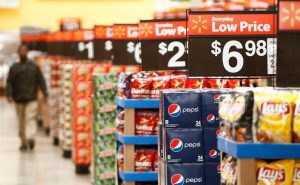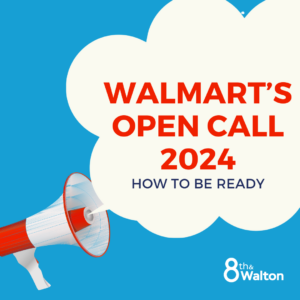
One of the key tenets of success in a business relationship with Walmart is Every Day Low Cost (EDLC), which drives Every Day Low Price (EDLP). One of the toughest areas in which to predict and control costs is in trade spend — the fees retailers charge manufacturers for promotions. Often these come in the form of chargebacks or discounts, sometimes without much notice.
At the end of the 20th century, Harvard Business Review said that manufacturers were no longer in charge of the retail relationship, largely because of trade spend. Retailers had the power, and manufacturers had to pay up.
The cost is not only in direct expenses; time and effort are also involved.
“Managers at Procter & Gamble,” they offered as an example, “estimate that 25% of salesperson time and about 30% of brand management time are spent in designing, implementing, and overseeing promotions.”
At the time that article was written, manufacturers were trying to fight back against these costs. Sharing of data between brands and retailers was rare and often a prickly issue.
Things have changed. Not only do Walmart suppliers have the benefits of Retail Link, but there has been another shift in power — from the retailer to the consumer. Today’s consumer uses online research to find and compare promotions, and may have made most shopping decisions before even entering the store.
A recent Nielsen study of trade promotions found that two thirds create negative ROI. But they also found that the companies that manage trade spend well see five times as much value as those that don’t.
The trick for suppliers to successfully manage trade spend with Walmart lies with product mix. And decision-making in this area relies on data.
Back in 1990, the Harvard Business Review gave some advice to manufacturers wanting to figure out how to make trade spend work for them: “Look for ways to reduce the administrative burden imposed on distributors as well as on yourself.” They went on to give examples of tech tools that could help, but of course those examples seem quaint now. The advice is good, though. While many suppliers view trade spend as an unavoidable cost of doing business, automated tools can change that.
CPGToolBox is a modern example of software that can help forecast, track, and analyze all data related to trade spend. A recent McKinsey study found data that supported the Nielsen study referenced above, but it also determined that the “winners” — the small proportion of companies that found trade spend profitable — didn’t spend more than the losers. They just spent it better.
CPGToolBox can help Walmart suppliers manage funds against long term EDLP or EDLC scenarios. Having all the relevant data in one place with user-friendly visual dashboards and a high level of automation in capturing the data means better decision making.
The common archaic deduction management approach can be streamlined and sped up using CPGToolBox Trade Planner. This will enable an understanding between the account team and HQ as plans progress. Not only does this reduce the time spent and eliminate costly mistakes, but it can also ensure that there are no unexpected deduction surprises.
CPGToolBox is offering a complimentary webinar sharing the experiences of one Walmart supplier, Lotus Bakeries, and the lessons they learned from that experience. The webinar will detail how CPGToolBox can help companies plan around Temporary Trade Infusions, as well as managing funds within the trade model.
The event is scheduled for Wednesday, November 11, 2015. Registration is required.




